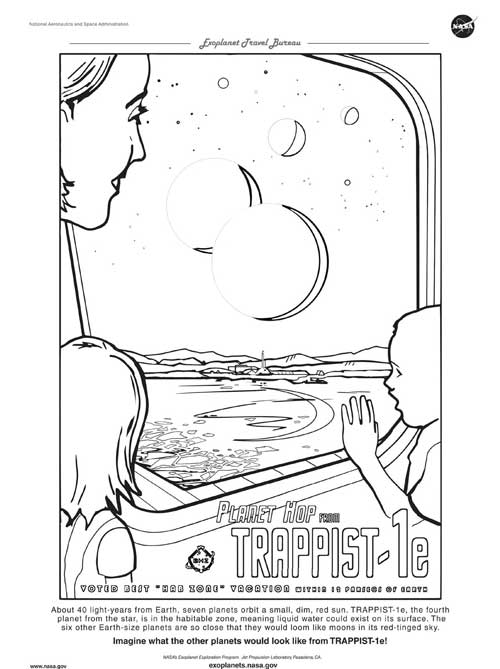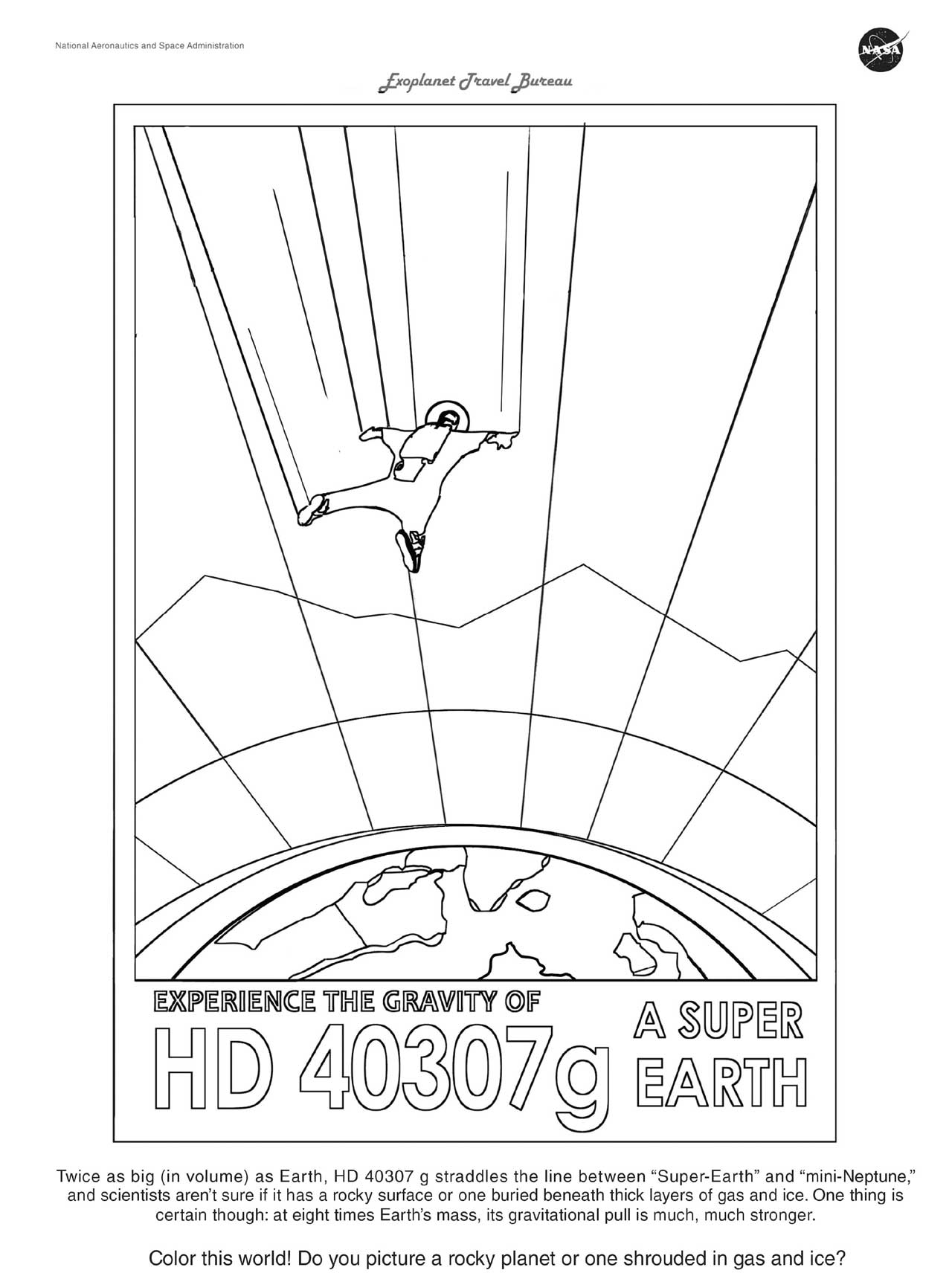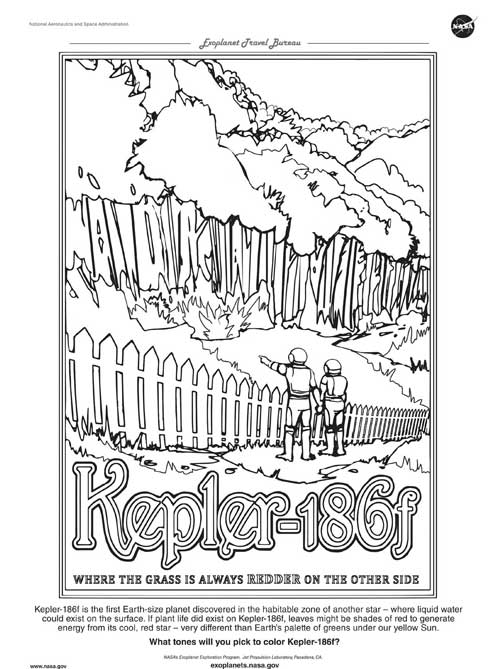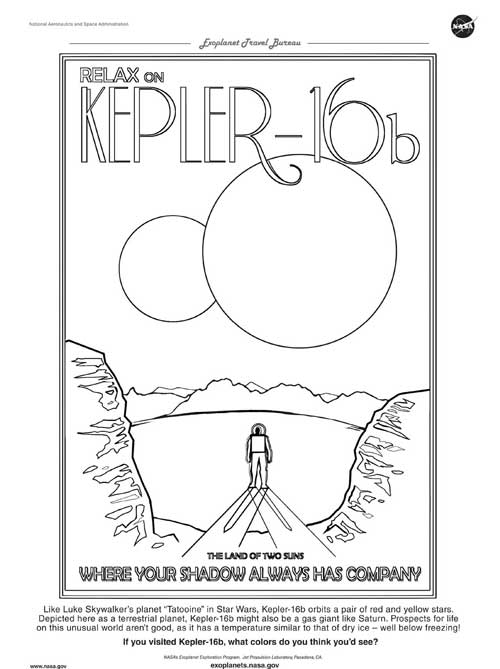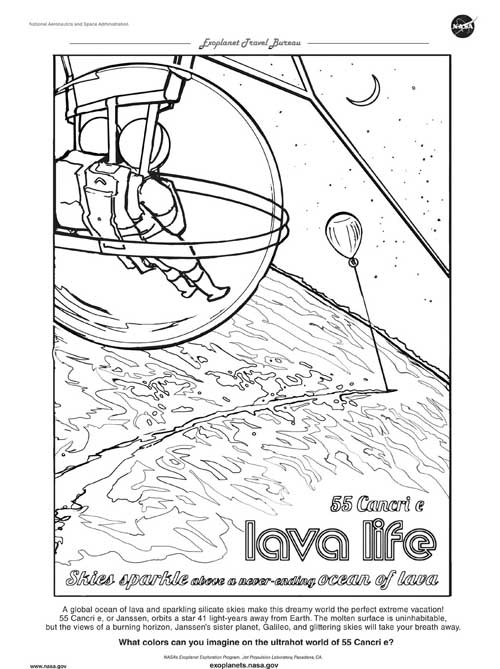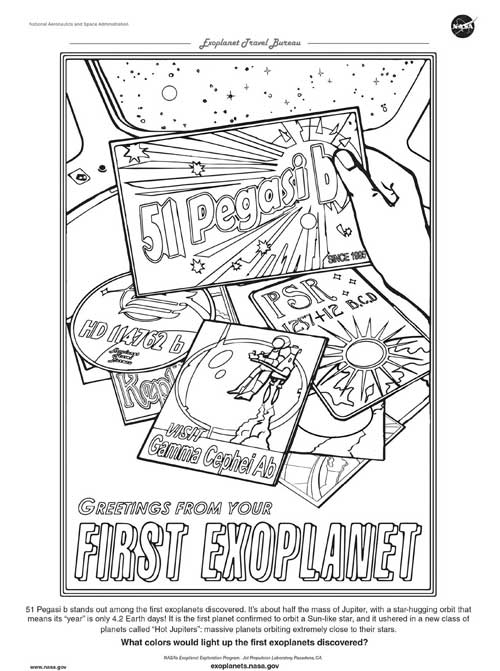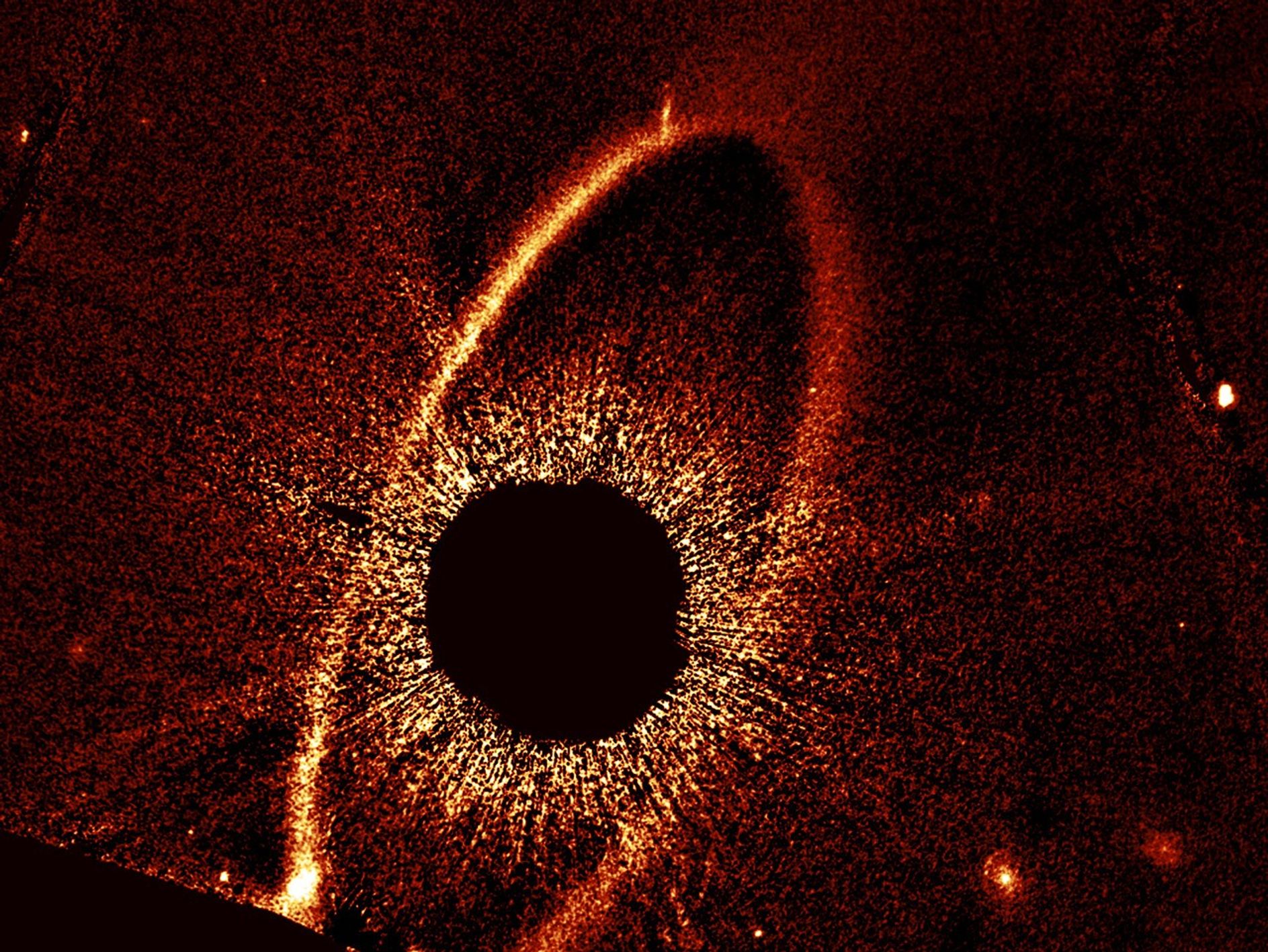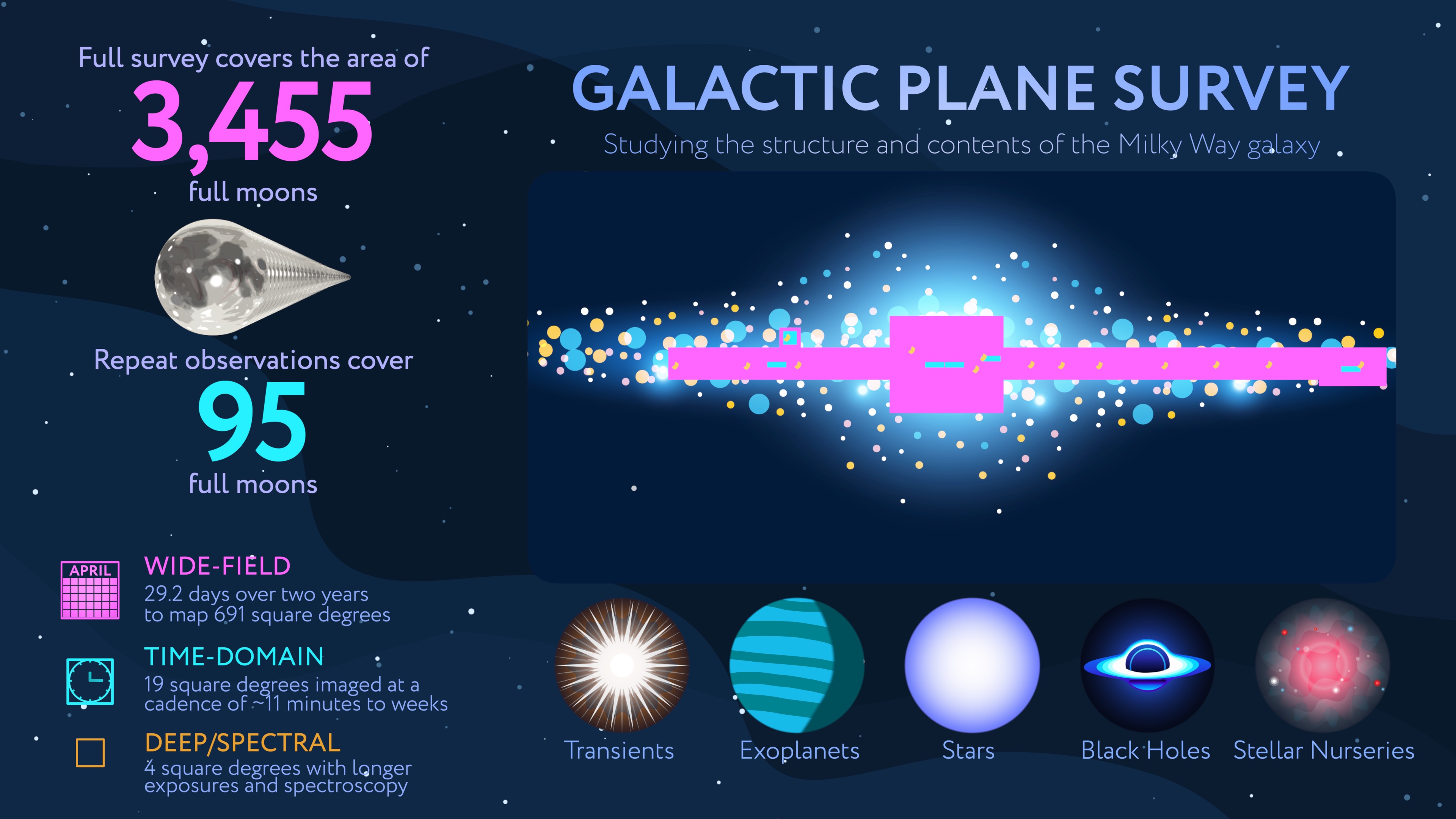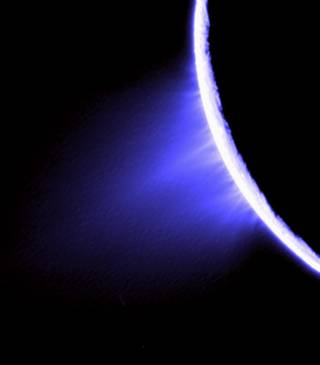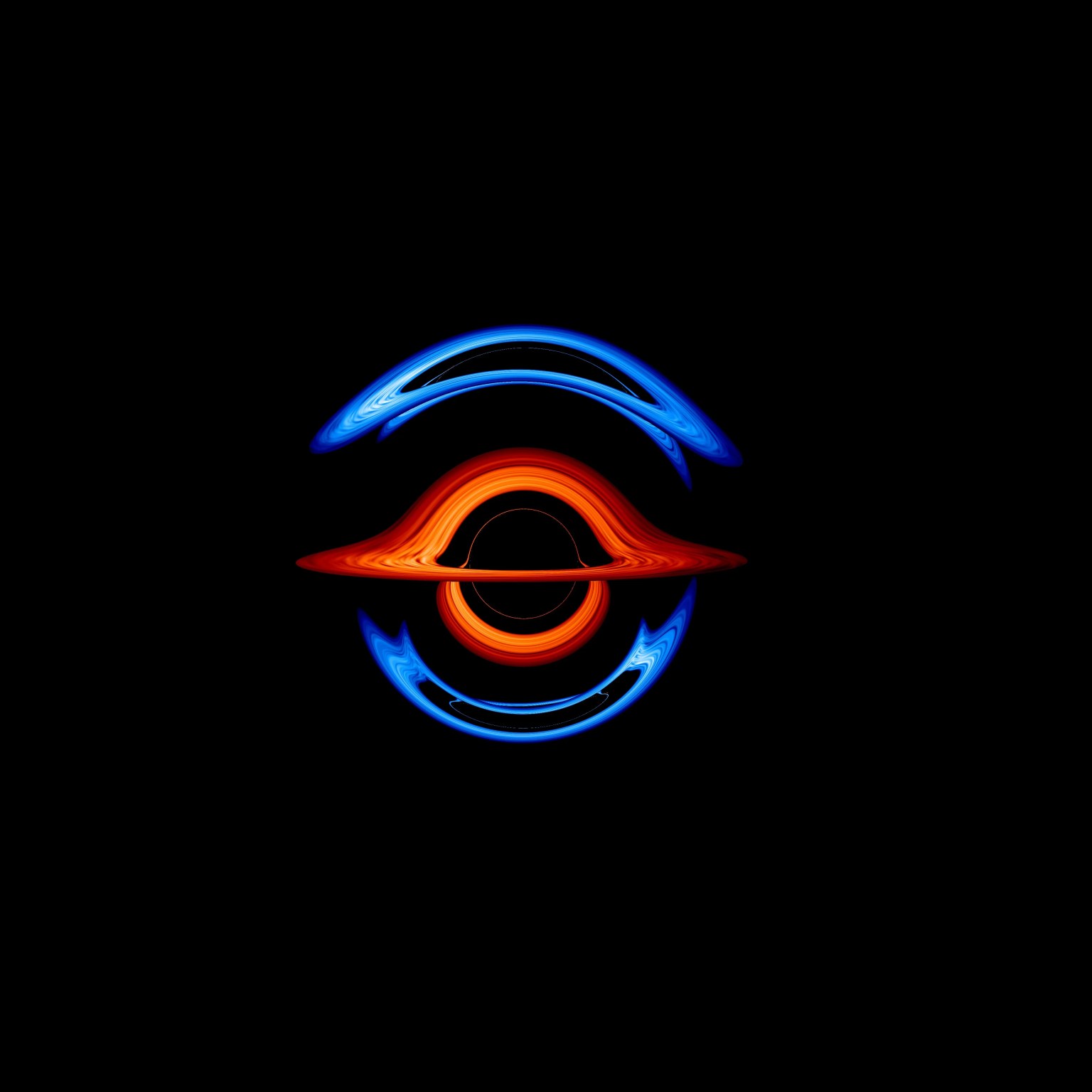NASA studies exoplanets – the planets beyond our solar system – with telescopes on the ground and in space, but our best idea of what they might look like comes from artists’ illustrations based on real science, like our Exoplanet Travel Bureau posters.
These posters are now available as coloring pages for you to add your own creative vision to exoplanet art. Grab crayons, markers, paint or colored pencils and shade in the hues of rocky terrain, lava oceans, planetary systems and more.
We want to see your creations! Post photos of your colored pages on social media and be sure to tag us on Twitter with @NASAExoplanets and use the hashtag #ColorWithNASA so we see your creations on Instagram and Facebook, too.
- About 40 light-years from Earth, seven planets orbit a small, dim, red sun. TRAPPIST-1e, the fourth planet from the star, is in the habitable zone, meaning liquid water could exist on its surface. The six other Earth-size planets are so close that they would loom like moons in its red-tinged sky. Imagine what the other planets would look like from TRAPPIST-1e! What hues would appear under a red sun? Credit: NASA-JPL/Caltech
- Twice as big (in volume) as Earth, HD 40307 g straddles the line between "Super-Earth" and "mini-Neptune," meaning scientists aren't sure if it has a rocky surface or one buried beneath thick layers of gas and ice. One thing is certain though: at eight times Earth's mass, its gravitational pull is much, much stronger. Color this world! Do you picture a rocky planet or one shrouded in gas and ice?
- Kepler-186f is the first Earth-size planet discovered in the habitable zone of another star – where liquid water could exist on the surface. If plant life did exist on Kepler-186f, leaves might be shades of red to generate energy from its cool, red star – very different than Earth's palette of greens under our yellow Sun. What tones will you pick to color Kepler-186f? Credit: NASA-JPL/Caltech
- Like Luke Skywalker's planet "Tatooine" in Star Wars, Kepler-16b orbits a pair of red and yellow stars. Depicted here as a terrestrial planet, Kepler-16b might also be a gas giant like Saturn. Prospects for life on this unusual world aren't good, as it has a temperature similar to that of dry ice – well below freezing! If you visited Kepler-16b, what colors do you think you’d see? Credit: NASA-JPL/Caltech
- A global ocean of lava and sparkling silicate skies make this dreamy world the perfect extreme vacation! 55 Cancri e, or Janssen, orbits a star 41 light-years away from Earth. The molten surface is uninhabitable, but the views of a burning horizon, Janssen’s sister planet, Galileo, and glittering skies will take your breath away. What colors can you imagine on the ultrahot world of 55 Cancri e?vCredit: NASA-JPL/Caltech
- 51 Pegasi b stands out among the first exoplanets discovered. It’s about half the mass of Jupiter, with a star-hugging orbit that means its “year” is only 4.2 Earth days! It is the first planet confirmed to orbit a Sun-like star, and it ushered in a new class of planets called “Hot Jupiters”: massive planets orbiting extremely close to their stars. What colors would light up the first exoplanets discovered? Credit: NASA-JPL/Caltech
More Ways to #ColorWithNASA
There are many ways to #ColorWithNASA. We have to admit, we're quite fond of the TESS coloring book inspired by NASA's exoplanet hunting space telescope.
There are coloring pages and more in an activity book based on the James Webb Space Telescope – the most powerful and complex space science telescope ever!
So far, we've found more than 4,000 exoplanets. Of those, 1,300+ are gas giants. So, we love this coloring book from NASA's Juno mission to Jupiter, our solar system's largest gas giant. How do you picture the swirling storms on Jupiter?
You can check out coloring pages focusing on the other planets in our solar system from NASA's Space Place.
All of NASA’s science missions are driven by powerful questions to help us better understand our planet, our solar system, and beyond. Color your universe! What vibrant colors will you bring to scenes of exploration?






























